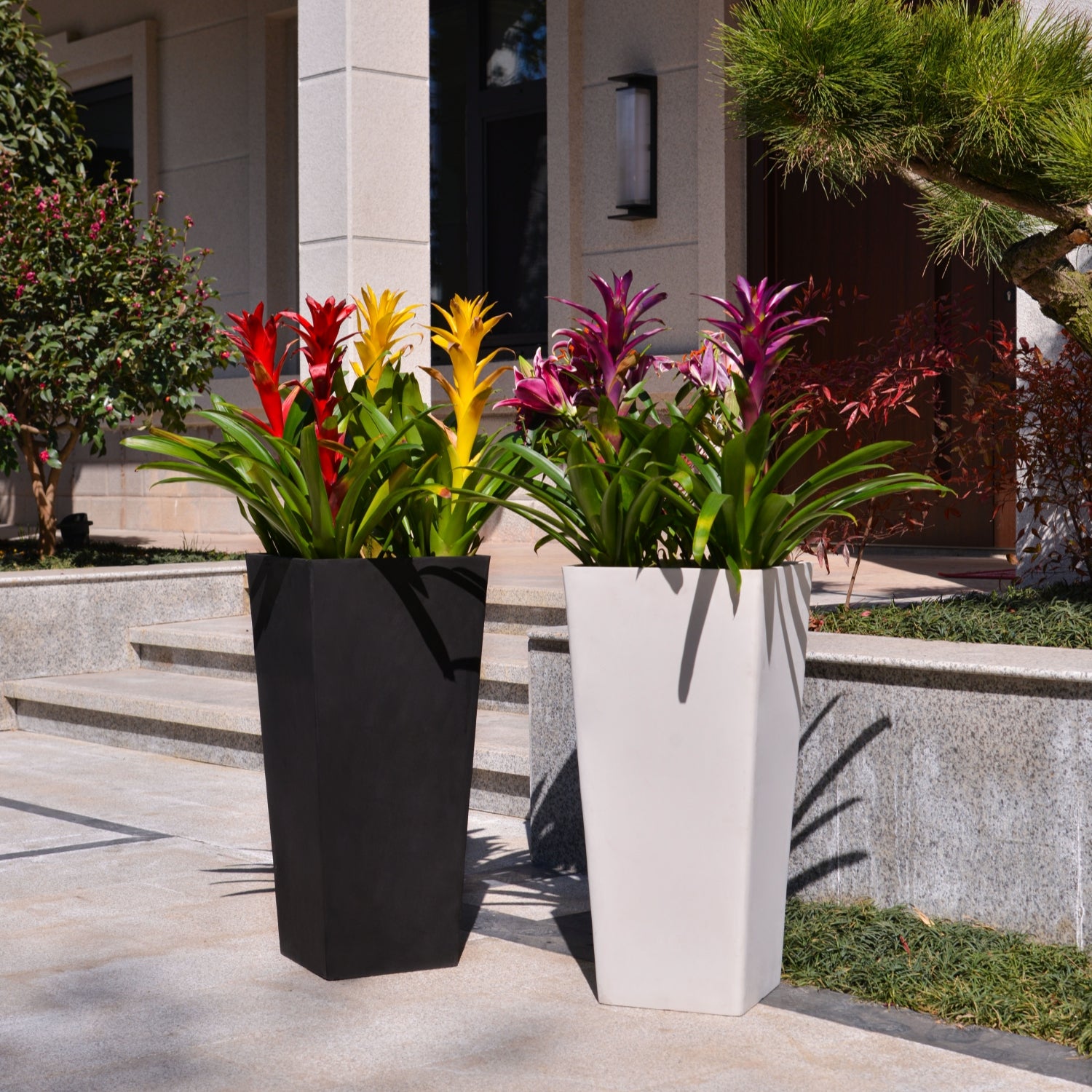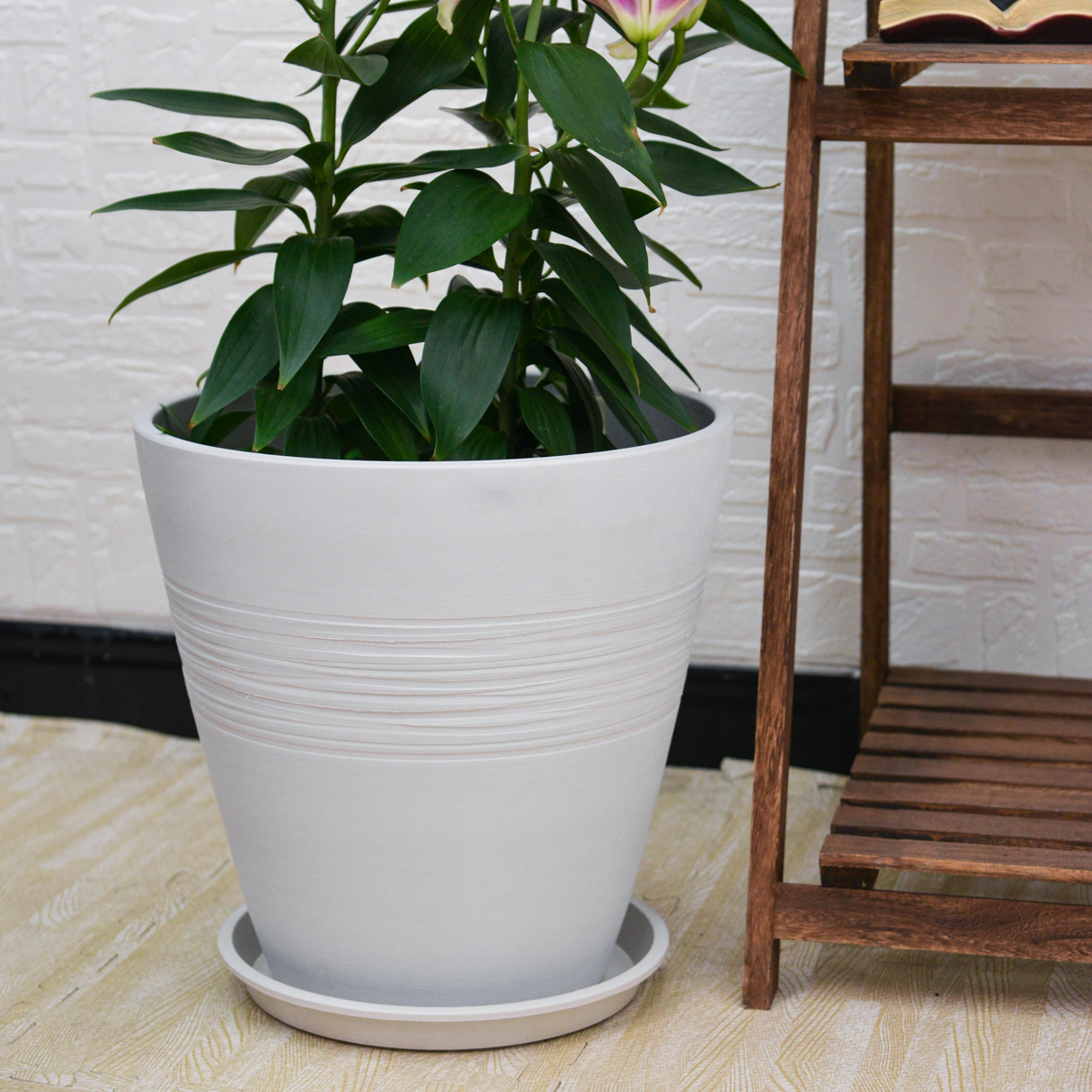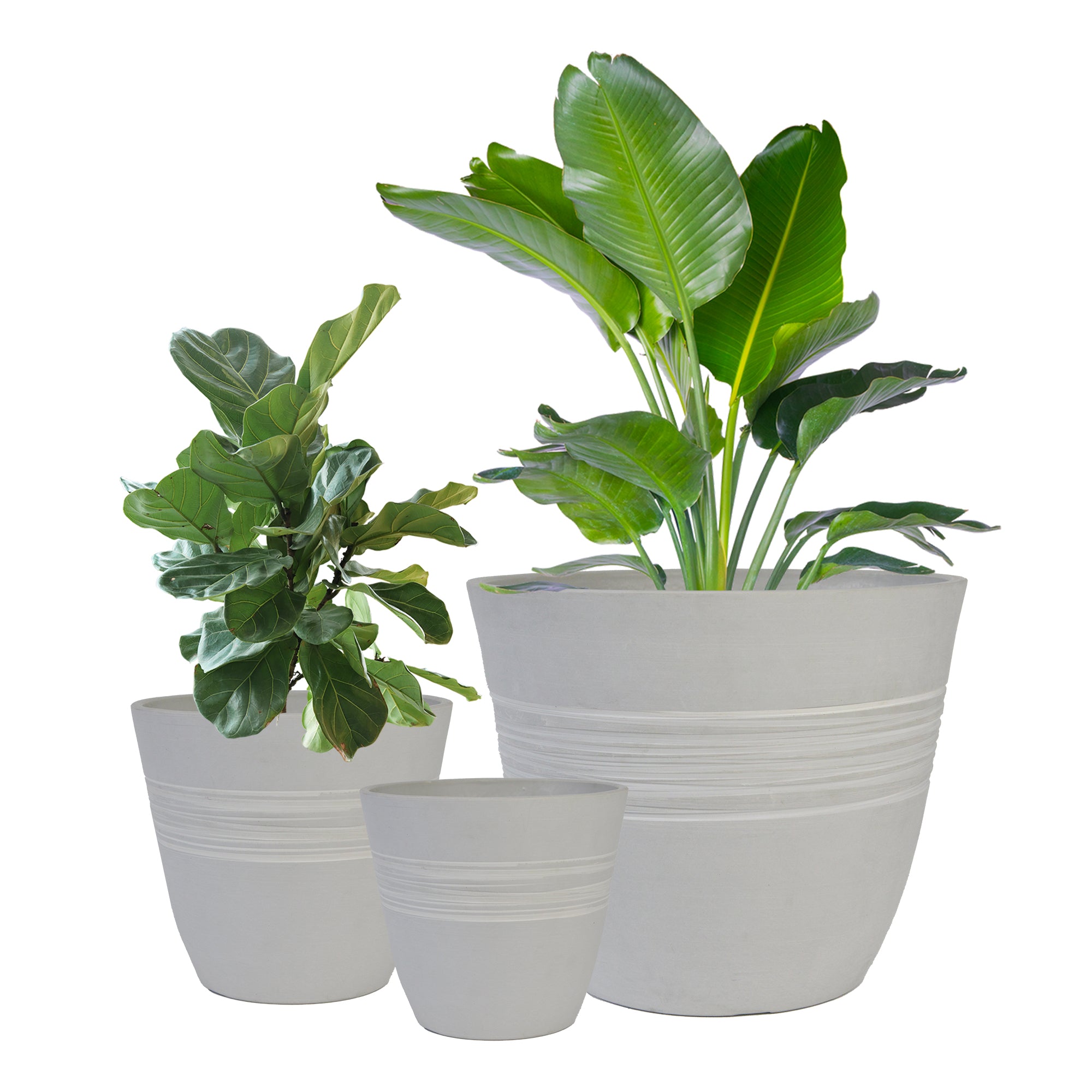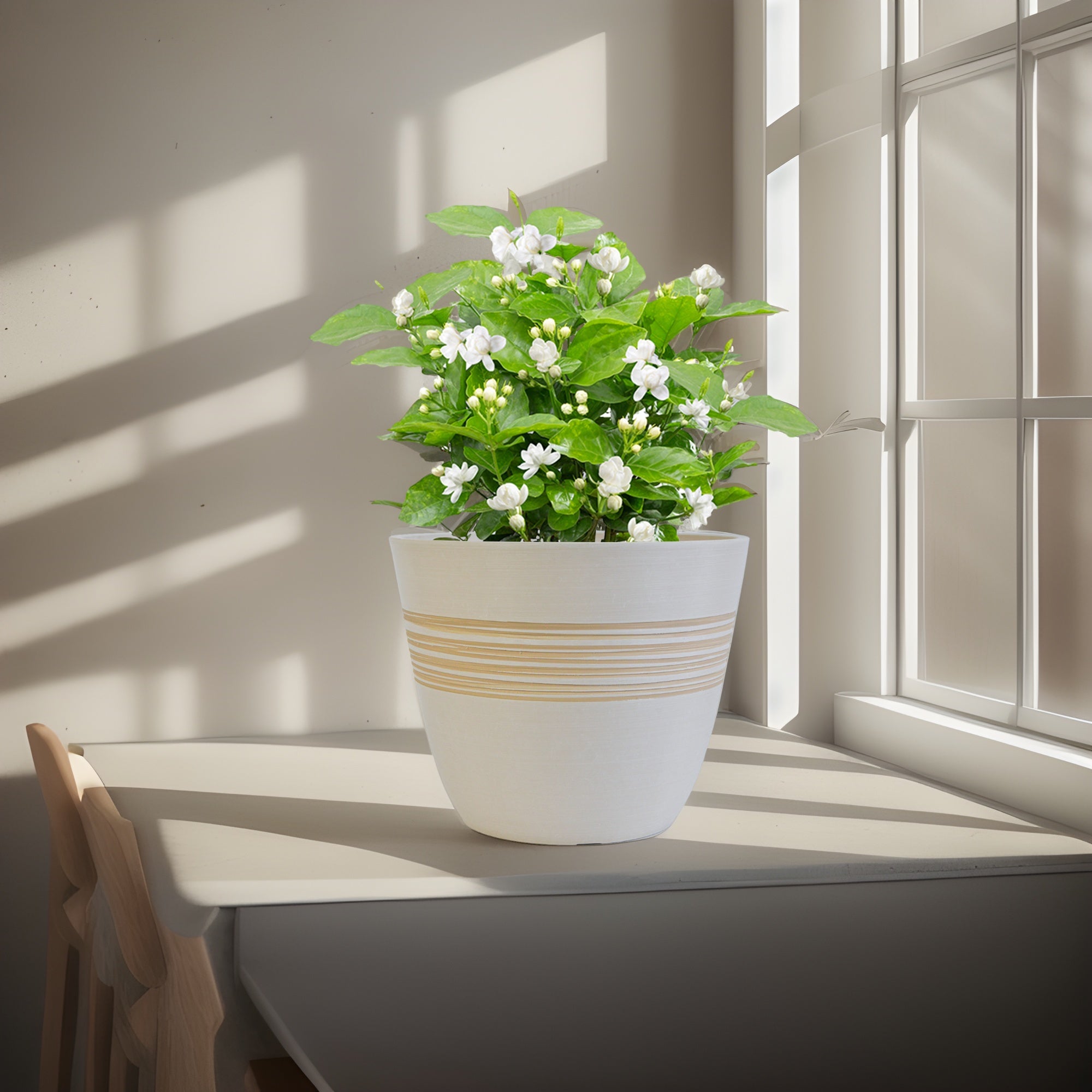How to make a self-watering device for plants?
Here are several ways to make DIY self-watering devices for your plants, ranging from super simple to slightly more involved. Choose the method that best suits your needs, materials you have on hand, and the type of plants you want to water.
1. The Upside-Down Plastic Bottle Drip System (Simplest & Quickest)
This is the easiest and fastest method, great for individual pots and short absences.
Materials You’ll Need:
- Plastic bottle (empty water bottle, soda bottle – size depends on pot size and how long you need it to last)
- Awl, nail, skewer, or thumbtack (to poke holes)
- Water
Instructions:
- Poke Holes in the Bottle Cap: Using your awl, nail, skewer, or thumbtack, poke several small holes in the plastic bottle cap.1 Start with just a few holes; you can add more later if needed. The size of the holes will control the drip rate. Smaller holes = slower drip.
- Fill the Bottle with Water: Fill the plastic bottle completely with water.
- Replace the Cap: Screw the cap with the holes back onto the water-filled bottle tightly.
- Invert the Bottle Quickly: Quickly flip the bottle upside down, holding your finger over the cap opening to prevent water from spilling out initially.
- Bury the Bottle Neck in the Soil: Make a hole in the soil of your potted plant, near the edge of the pot and away from the plant’s main stem. Quickly push the bottle neck, cap-first, deep into the soil, burying it up to the bottle’s shoulder. The holes in the cap should be buried in the soil.
- Observe Drip Rate: The water should slowly start to drip out of the holes into the soil as the soil dries. If it’s dripping too fast, the holes might be too big or too many. If it’s not dripping at all, you might need to make the holes slightly larger or add a couple more. You want a slow, steady drip, not a gush.
Pros:
- Super simple and fast to make.
- Uses readily available materials (plastic bottles).
- Good for individual pots.
- Inexpensive.
Cons:
- Limited water capacity (bottle size).
- Drip rate can be inconsistent and hard to control precisely.
- Not very reliable for long periods or very thirsty plants.
- Can look a bit unsightly.
- Might not work well in very compacted soil.
Tips for Success:
- Start with fewer, smaller holes and test the drip rate. You can always enlarge them if needed.
- Use larger bottles for larger pots or longer periods.
- Make sure the bottle is buried firmly in the soil so it doesn’t tip over.
- This method is best for plants that don’t need constantly waterlogged soil, as the drip can sometimes be uneven.
- Test the system for a day or two before relying on it, especially before going on vacation.
2. Wick Watering System (Consistent Moisture Delivery)
Wick watering provides a more consistent and controlled water supply compared to the bottle drip method.
Materials You’ll Need:
- Water Reservoir: Jar, bowl, bucket, or any container to hold water. Choose a size appropriate for your plant and how long you need it to last.
- Wicking Material:
- Cotton rope or thick cotton string (untreated, plain cotton works best).2
- Strips of felt or cotton fabric (old t-shirts, towels cut into strips).3
- Commercial wicking cord (available at some garden stores or online).4
- Potted Plant(s)
Instructions:
- Cut the Wick: Cut a length of wicking material long enough to reach from the bottom of your water reservoir up into the middle of the soil in your plant pot, with some extra length to spare.
- Fill the Water Reservoir: Fill your chosen reservoir container with water.
- Saturate the Wick: Thoroughly wet the wick with water. This helps start the capillary action.
- Insert One End of the Wick into the Soil: Using your finger or a stick, create a hole in the soil of your potted plant, near the center and going down a few inches (3-5 inches). Bury one end of the saturated wick deep into this hole, ensuring good contact with the soil.
- Place the Other End of the Wick in the Reservoir: Place the other end of the wick into your water reservoir, making sure it reaches the bottom of the container and is submerged in the water. You might need to weigh down the end in the reservoir with a small stone or pebble to keep it submerged.
- Position Reservoir: Place the water reservoir next to or slightly below the plant pot. If the reservoir is significantly lower than the pot, the water might wick too quickly and potentially overwater. Slightly lower or at the same level is usually best.

Pros:
- Provides more consistent and controlled water delivery than bottle drip.
- Reservoir size can be customized.
- Good for plants that like consistent moisture.
- Relatively simple to set up.
Cons:
- Wick effectiveness can vary depending on material and soil type.
- Reservoir can still run dry if not large enough.
- Might not be ideal for plants that need to dry out between waterings.
- Requires testing to ensure proper wicking and water delivery rate.
Tips for Success:
- Use thicker wicks or multiple wicks for larger pots or thirsty plants.
- Ensure the wick material is absorbent and natural (cotton, felt). Avoid synthetic materials that might not wick well.
- Pre-soak the wicks to help start the wicking action.
- Test the system for a few days to a week before relying on it, especially for longer absences. Monitor soil moisture and water reservoir level.
- For larger pots, you might need multiple wicks spaced around the pot for more even moisture distribution.
3. Converted Self-Watering Pot (Slightly More Involved, More Like a Real Self-Watering Planter)
This method adapts an existing pot to function more like a commercial self-watering planter by creating a water reservoir at the bottom.
Materials You’ll Need:
- Potted Plant (in its existing pot)
- Larger Outer Container: A pot, bucket, tub, or even a plastic storage bin that is wider and deeper than your plant’s pot. This will be the water reservoir. Must be waterproof.
- Gravel, Pebbles, or Bricks (for platform in reservoir): To create a platform to elevate the plant pot above the water level in the reservoir. Based on search result [1], while gravel doesn’t improve drainage within the planting container itself, in this specific DIY setup, gravel or pebbles are used to create a platform in the outer container to keep the plant pot above the water, not for drainage within the plant pot itself. We are using the outer container as the reservoir.
- Wick (optional, but can improve water uptake): Cotton rope, strips of felt (see wick material options in method 2).
- Water
Instructions:
- Prepare the Outer Container (Reservoir): If you’re using a pot as the outer container and it doesn’t have drainage holes at the bottom (which is good for a reservoir), you’re ready. If it does have bottom drainage holes, you’ll need to line the bottom inside with a waterproof plastic liner (like a plastic bag cut open or pond liner material) to make it water-tight, going up the sides a bit, to create a reservoir. If using a bucket or plastic bin, ensure it is waterproof.
- Create a Platform in the Reservoir: Place a layer of gravel, pebbles, or bricks at the bottom of the outer container. The height of this platform should be enough to elevate the base of your plant pot above the water level you’ll be adding to the reservoir. You want the bottom of the plant pot to sit just above the water, not submerged in it (except for the wicks, if used).
- Add Water to the Reservoir: Pour water into the outer container, filling it up to a level that is just below the top of your gravel/pebble platform. Don’t overfill – you want the water level to be beneath where the base of your plant pot will sit.
- Place Plant Pot into the Outer Container: Carefully place your potted plant on top of the gravel/pebble platform inside the outer container. The base of the plant pot should now be elevated above the water level in the reservoir.
- Add Wicks (Optional, but Recommended for Better Wicking): For improved water uptake, you can use wicks. Cut 2-3 wicks per plant pot. Thoroughly wet the wicks. Gently push one end of each wick up through the drainage holes at the bottom of your plant pot, so it makes good contact with the soil inside the pot. Let the other ends of the wicks dangle down into the water reservoir below the gravel platform. The wicks will draw water up to the soil. If your plant pot has no drainage holes at the bottom, you can try to carefully insert wicks along the sides between the pot and the soil, reaching down into the reservoir, but this is less effective.
- Initial Top Watering (Important): After setting up, water your plant thoroughly from the top, directly onto the soil surface, until you see water draining into the reservoir below. This initial top watering is important to saturate the soil from the start and encourage wicking action.
Pros:
- Turns an existing pot into a self-watering system.
- Creates a larger water reservoir than bottle or wick methods alone.
- Elevated platform helps prevent the plant pot from sitting directly in water.
- Wicks (if used) improve water uptake and control.
- Can be adapted for various pot sizes.
Cons:
- More materials and a bit more involved to set up than simpler methods.
- Outer container needs to be waterproof or lined.
- Still relies on capillary action and wicking, so effectiveness depends on soil and wick materials.
- Requires testing to ensure proper water level and wicking.
Tips for Success:
- Ensure the platform is stable and will support the weight of your potted plant when watered.
- Don’t let the base of the plant pot sit directly in the water – it should be elevated above the water level on the platform. The wicks (if used) will draw water up.5
- Use a well-draining potting mix in the plant pot for best results.
- Test the system before relying on it for vacation. Check water reservoir level and soil moisture. Refill reservoir as needed.
4. Terracotta Cone/Spike Waterer (Porous Clay Slow Release)6
Terracotta cones or spikes are porous clay devices that slowly release water into the soil when inserted into a pot and filled with water.7 You can DIY a version using unglazed terracotta pots.
Materials You’ll Need:
- Small Unglazed Terracotta Pot (the smaller the better for easier insertion). Alternatively, you can buy commercial terracotta watering spikes/cones.
- Cork or Stopper (to plug the drainage hole of the terracotta pot – if it has one, some very small terracotta pots may not have drainage holes). A wine cork, rubber stopper, or even tightly rolled plastic wrap and tape can work.
- Potted Plant(s)
- Water
Instructions:
- Plug the Drainage Hole (If Present): If your small terracotta pot has a drainage hole at the bottom, plug it securely from the inside of the pot using a cork, stopper, or waterproof seal. You need to make it water-tight so it can hold water when inverted.
- Fill the Terracotta Pot with Water: Fill the small terracotta pot completely with water.
- Invert and Bury: Carefully invert the water-filled terracotta pot and quickly bury the open rim (the wider opening) deeply into the soil of your plant pot. Push it in so that most of the terracotta pot is buried in the soil, leaving just the plugged base (the bottom of the terracotta pot) sticking out slightly above the soil surface. The porous terracotta will slowly seep water into the surrounding soil.8
Pros:
- Simple to make and use (especially if using commercial terracotta spikes).
- Uses porous terracotta to naturally regulate water release.9
- Good for individual pots.
- Can be somewhat decorative if using commercial terracotta spikes.
Cons:
- Limited water capacity (small terracotta pot size).
- Water release rate can be affected by soil moisture and terracotta porosity.
- Terracotta can sometimes clog with minerals over time.
- DIY version with a plugged terracotta pot might be a bit less reliable than commercial spikes in terms of consistent water release.
Tips for Success:
- Use unglazed terracotta, as it is porous and allows water to seep through. Glazed terracotta won’t work.
- Ensure the drainage hole of the terracotta pot is securely plugged to hold water.
- Bury the terracotta pot deeply in the soil for good contact.
- For larger pots, you might need to use multiple terracotta cones spaced around the pot.
- Refill the terracotta cone by pouring water into the exposed base as needed.
- Test the system before relying on it, especially for longer periods.

Comparison of DIY Self-Watering Methods:
| Method | Complexity | Reliability | Cost | Water Capacity | Best For | Good for Singapore Climate? |
| 1. Bottle Drip | Very Simple | Low | Very Low | Very Limited | Individual pots, very short absences, DIY beginners | Yes, for short absences |
| 2. Wick Watering | Simple | Medium | Low | Customizable | Plants needing consistent moisture, short-medium trips | Yes, if reservoir is large enough |
| 3. Converted Self-Watering Pot | Medium | Medium-High | Low-Med | Larger | Adapting existing pots, medium trips, versatile | Yes, good reservoir and control |
| 4. Terracotta Cone | Simple | Medium | Low-Med | Limited | Individual pots, shorter trips, decorative | Yes, for shorter absences |
Important – Test Before Relying on Any DIY System!
No matter which DIY self-watering device you choose, it is absolutely essential to test it thoroughly for several days (or ideally a week) before you rely on it, especially if you are using it while on vacation.
- Set up the system for your plants.
- Monitor the soil moisture levels regularly. The soil should be consistently moist, but not waterlogged.
- Observe how quickly the water reservoir depletes.
- Adjust the system as needed (e.g., adjust drip rate, wick thickness, reservoir size) based on your observations.
DIY self-watering devices can be a great way to keep your plants watered, but they are not foolproof. Testing and careful setup are key to success, especially for longer periods or more demanding plants. For very valuable plants or longer absences, commercially available self-watering planters or automated drip irrigation systems offer more reliability and control.
20T
By greenship|2024-08-13T06:42:22+00:00August 13, 2024|Categories: Hand-carving Series|
GreenShip 27inch Tall Planters for Porch, Large Outdoor Planter Pots with Drainage Hole
By greenship-seo|2025-04-10T06:27:21+00:00April 7, 2025|Categories: Hand-carving Series|Tags: Decorative Flower Pots|
KC2-GS
By greenship|2024-08-16T06:30:21+00:00August 16, 2024|Categories: Hand-carving Series|
Plant Pots 6 inch 8 inch 12 inch for Indoor Outdoor Plants, Set of 3 Modern Decorative Planter with Drainage Hole, Decorative Flower Pots
By greenship-seo|2025-04-10T06:38:40+00:00January 16, 2025|Categories: Hand-carving Series|Tags: Decorative Flower Pots|
KC3-14A
By greenship|2024-08-16T06:26:30+00:00August 16, 2024|Categories: Hand-carving Series|
Planter for Indoor Outdoor Plants, Set of 2 Modern Decorative Plant Pots with Drainage Hole, Decorative Flower Pots
By greenship-seo|2025-04-10T07:46:01+00:00January 9, 2025|Categories: Hand-carving Series|Tags: Decorative Flower Pots, Self-Watering Pots|






